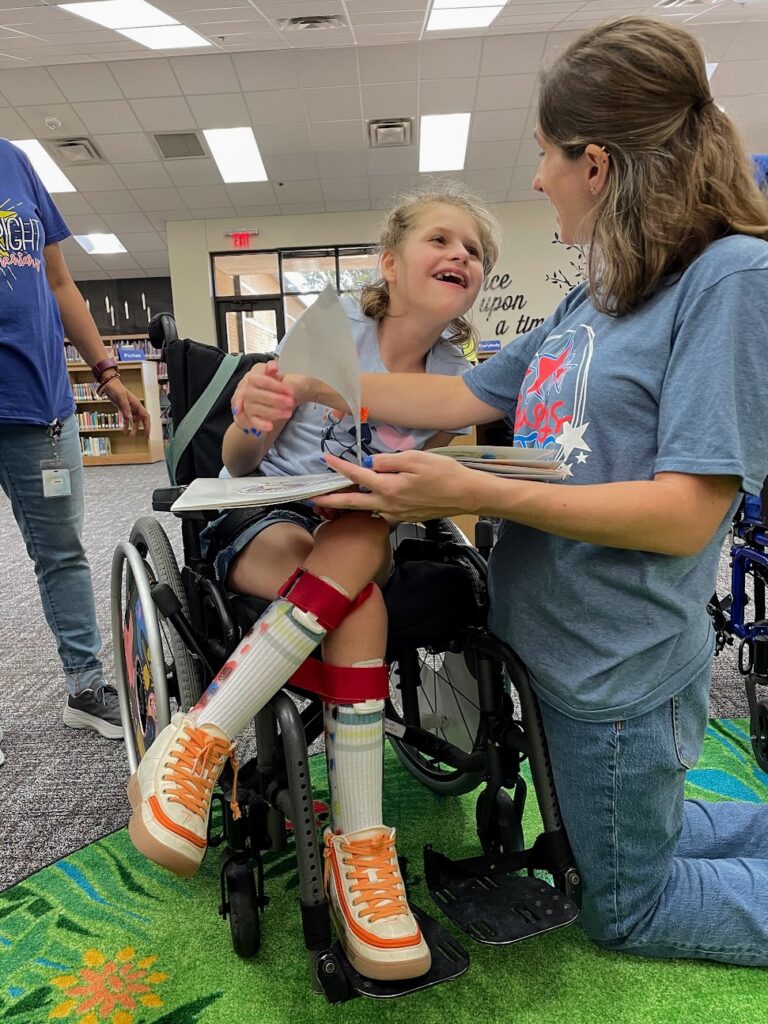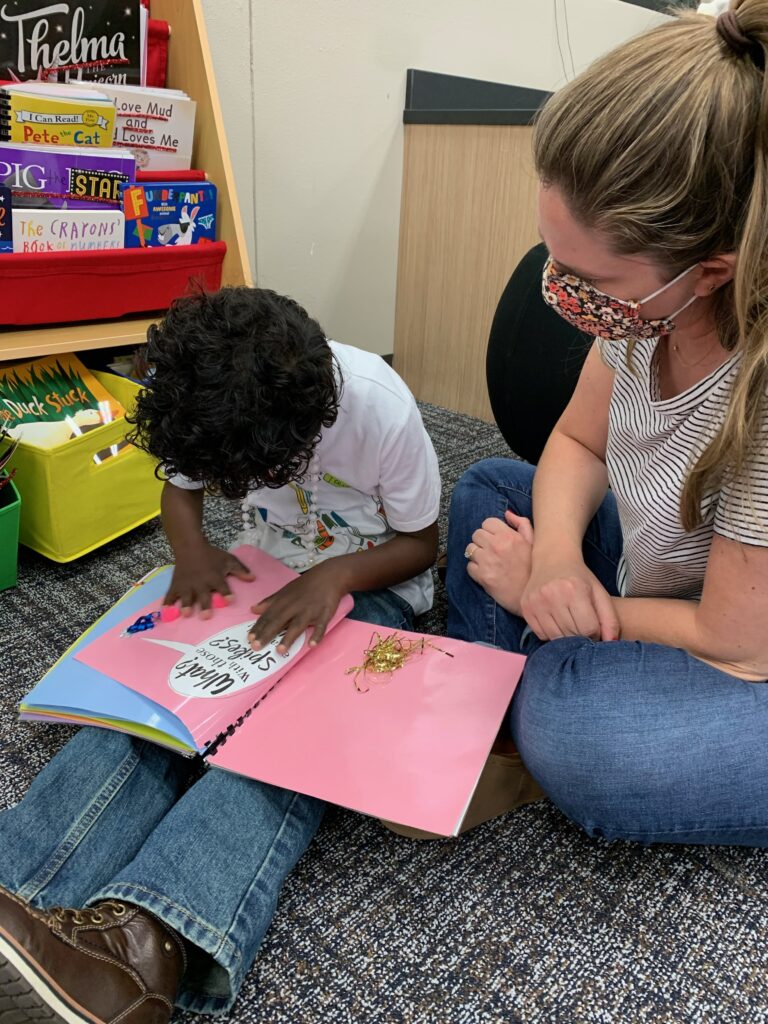
What are Adapted Books?
Adapted books are traditionally published books that have been modified for increased durability and then enhanced with sensory elements. These modifications ensure accessibility of popular literature and library resources for readers with disabilities. The laminated pages provide a sense of comfort when handling a book, allowing all readers to interact with books independently without fear of damage. The sensory items allow the reader to connect to the story in a new and additional way. They provide a more interactive and tactile experience, which enhances engagement and enjoyment with books.
Origin of Adapted Books
Adapted books have been utilized by special education professionals to modify the reading experience for their students with disabilities for a long time. The idea is not new and it is not mine. However, when I saw them in use and the incredible success they had in providing not only access, but also connection and joy to literature for these students, I was inspired. This inspired my idea for an adapted book library collection in my school library. This section would be a collection of the most loved books in my library, but would be adapted to better fit the needs of these students with different sensory needs and disabilities.


Adapted Book Library Collections
My biggest innovation is including them as a part of a school library collection. The adapted book library collection in my library was the first of its kind. My goal was to take the books that my whole community and so many young readers loved and to adapt them with the more durable pages and binding and with added sensory items. This ensured that all students not only had access to books that are accessible to them, but that they were also able to get them from the library and have an equitable library experience.
Benefits
The benefits of adapted books are immense. Below are just some of the many benefits they have on readers:
- Provide a more interactive, tactile experience with literature, which enhances engagement to allow readers to connect with the story in a new way.
- Solve the issue of inequitable access to literature by addressing the physical, cognitive, and sensory barriers that many patrons with disabilities face when interacting with traditional books.
- Stimulate the use of library resources to this underserved population.
- Ensure patrons with disabilities can fully participate in literacy activities, fostering both engagement and inclusion.

For suggestions for books, tools and supplies for adapting, visit the Suggested Items for Adapting page.
Presentations, consultations and other assistance in creating adapted books and adapted book collections are offered through Libraries For All. To learn more, visit the Services page or contact Libraries For All via the Contact page.
More information on adapted books and adapted book library collections can be found in my upcoming book, Supporting Students with Significant Disabilities in School Libraries: A Vision for Radical Inclusion, published by Bloomsbury Libraries Unlimited.